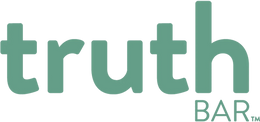

· By Mark Davis
Convincing Reasons to Read Food Nutrition Labels
People often go shopping without thinking about what the food they buy is made of. Believe it or not, even ordinary tomato sauce might contain a high amount of sugar. Sounds surprising? Well, the answer lies on the back of each food product that takes no less than a few minutes to examine. Furthermore, grocery shopping becomes a completely different experience once you start taking food ingredients into consideration. Believe it or not, there are many reasons to read food labels every time you go to the store. You’ll find some of them in this article and hopefully begin to take better care of what you eat. That way, you also invest in your body and mind. So, take a break and check out the tips that can change your life for the better!
You’ll stay on track with your diet
Did you know that plenty of packaged foods advertised as healthy and organic contain lots of sugar and additives? Hence why you should never trust the marketing schemes, companies use to have you buying their products.
Once you start paying more attention to the ingredients list, you’ll realize which “healthy” food hinders your diet. You may not eat chocolate and ice cream that often; however, sugar lurks in sauces, chips, juices, etc. So, before you put that seemingly super healthy granola bar or 100% orange juice, turn it around and read the ingredients. See if the concentration of sugar and other ingredients is acceptable for you, especially if you plan to switch to mindful eating habits.
You’ll reduce excess sugar and sodium intake
As mentioned above, reading labels will give you more insight into the ingredients. Chances are, you might get surprised with a higher-than-expected concentration of sugar and sodium in your favorite dressings, for example. That’s how you’ll learn which products to buy less often or cut from your menu for good.

Studies show that excess sugar intake leads to brain fog, hindered fitness performance, and poor focus. Both sugar and sodium may lead to constipation and a constant feeling of bloatedness. This is yet another reason why reading food labels matters tremendously.
You’ll adopt balanced eating habits
Reading food labels doesn’t mean you have to overanalyze every carb-protein-fiber-fat combo in every possible food. It’s not the end of the world if you happen to have chocolate or chips dipped in salsa. Food is meant to be fuel and joy. You’re not doing anything wrong if you let yourself loose for a day or two. The point is to find the right balance between macros. The current federal nutritional guidelines suggest proportional amounts of carbs and proteins and less fat. Of course, other factors will influence the way you calculate your macros. For example, carb intake will increase if you’re trying to gain weight. The protein percentage will have to be higher if muscle gain is your goal. Once you know your macros, it’ll be easier to understand the content of food products. Plus, reading the label will make more sense to you.
A simple Mifflin St.Jeor Equation will help you figure out your macros
1. Calculate your BMR: Male (10 x current weight + 6.25 x Height - 5 x Age + 5);
Female (10 x current weight + 6.25 x Height - 5 x Age + 161). The result will show
you the total calories your body needs just to function.
2. If you are leading an active lifestyle, multiply your calories with the activity factor (1.375 - light; 1.55 - moderate, 1.725 - high). The final result is the number of calories you need to sustain the weight.
3. Deduce 300 to a maximum of 500kcal if you want to lose weight, or add the same amounts if you want to add some pounds.
4. Divide your final daily calorie count into carbs, fats, and proteins. Consult a dietician to help you figure out the exact macronutrient ratio you need for a sustainable lifestyle or specific fitness goal.
Healthier post-workout choices
Another thing you’ll notice after you begin to read food nutrition labels is the quality of post-workout shakes and snacks. Pay attention to what you’re snacking on after intense cardio and weight-lifting sessions. Food labels also indirectly educate about everyday groceries sold at your nearby store or fitness shop. Therefore, make sure to buy protein bars that don’t load you with sugar.
Vitamins for muscle repair, growth, and minerals are also super important after a workout, so remember to check the stats of your favorite supplements. Supplements for muscle growth and repair come in different formulations and prices. Therefore, it’s worth checking their quality and deciding whether to purchase them. Rely only on reputable and trustworthy manufacturers.
How to read food nutrition labels
Here’s how to read nutrition labels properly and thus make better food decisions:
● Read serving size
● Pay attention to the ingredients listed in order. The first ingredient always weighs
the most
● Check total calories
● Look for a disclaimer about allergens
● Don’t overlook the best-before date
In order to know what food product fits your diet and lifestyle, you must know your macronutrient ratio. If you’re building muscles, proteins must be on top of the ingredients list, and so on. It’s best to consult with a professional food expert who can advise you best.
Make reading food labels a habit
Now that you are aware of reasons to read food nutrition labels, it’s time to turn it into a habit. Remind yourself to read the back of the packaging the next time you go shopping for groceries. Set the alarm if you have to. Indeed, it might take you some time to get used to it. However, it won’t take long until you notice the first positive changes. You’ll catch yourself paying more attention to the nutritional value of the food instead grabbing the first thing that seems tasty. That said, your diet will improve, and you’ll notice your fitness results faster than before. Reading food labels is just a small effort that may improve the quality of your life.


